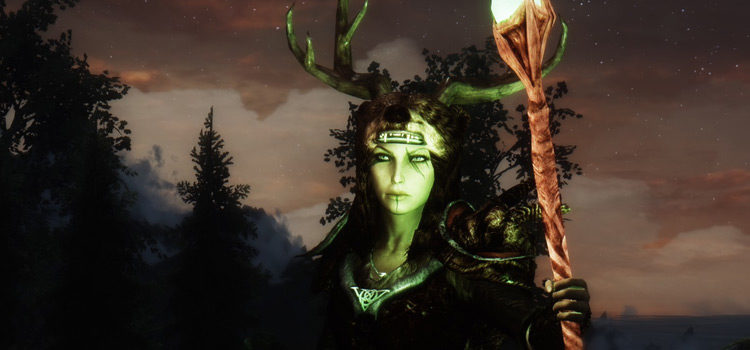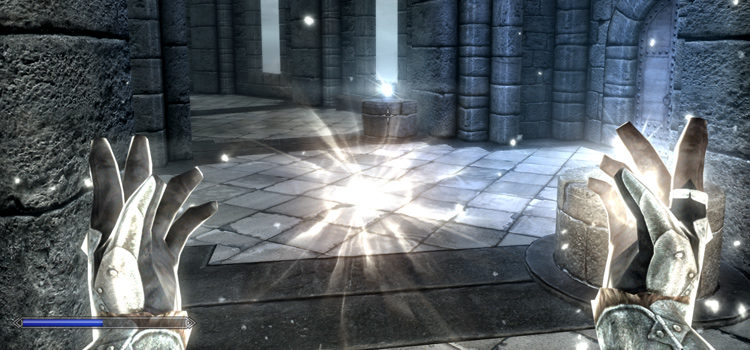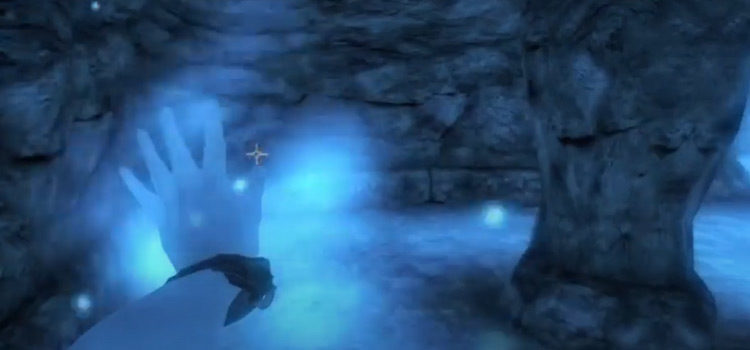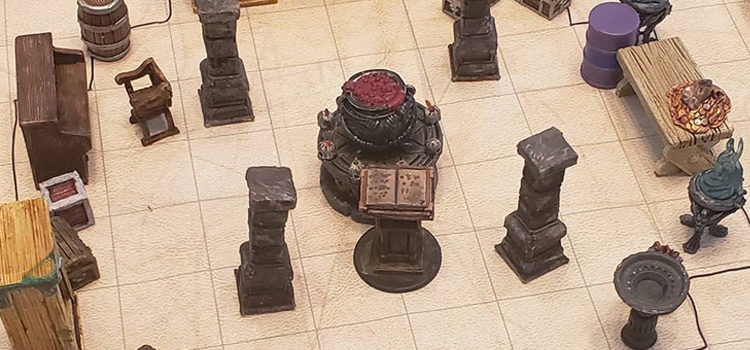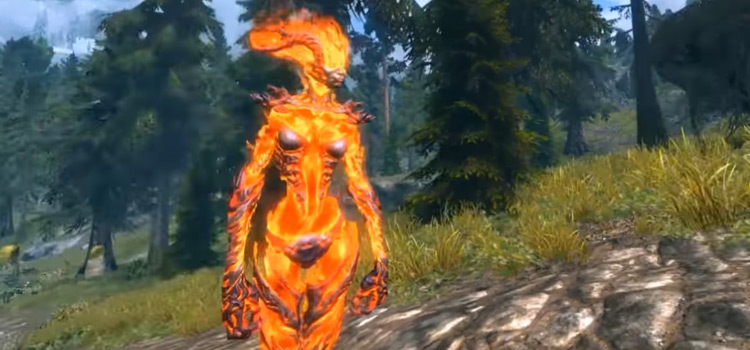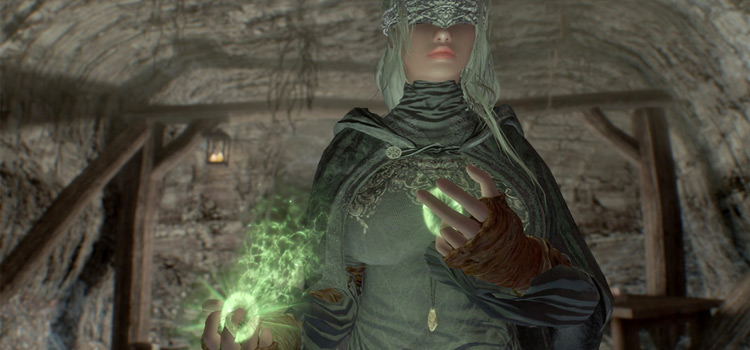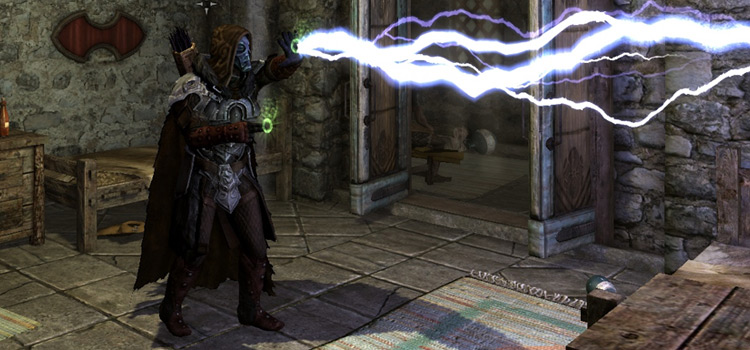20 Best Druid Spells For D&D 5e
This post may contain affiliate links. If you buy something we may get a small commission at no extra cost to you. (Learn more).
Druids in Dungeons & Dragons 5th Edition (D&D 5e) rely on the forces of nature for their magical powers, including their full spellcasting progression and bestial transformations with Wild Shape.
The class has a versatile spell list containing many thematic choices that allow Druids to heal and buff allies, damage and disable enemies, and alter their environment.
Through my experience with druids, I found that they can fill in most of a party’s spellcasting needs; plus specializing your prepared spells can make you especially potent in almost any given niche.
I usually prefer versatility when playing this class, so my opinions on the 20 best Druid spells for D&D 5e reflects that playstyle.*
*NOTE: This list includes only 1st-level spells or higher. Also when I mention levels, I mean specifically the designated level of each spell, not when a Druid would gain access to them.
20. Transport via Plants
Source: Player’s Handbook
Druids first gain access to long-distance teleportation through this 6th-level spell, allowing them to travel from one Large-sized inanimate plant to another on the same plane of existence.
The only caveat here is that the Druid must have seen or touched the plant at their intended destination.
Transport via plants has the bonus of being very fitting to the Druid’s nature motif.
19. Moonbeam/Flaming Sphere
Druids have access to many spells focused on dealing damage over time.
Both moonbeam and flaming sphere are 2nd-level spell options that fit this category. Moonbeam affects a 5-foot radius area, while flaming sphere is a 5-foot diameter sphere that deals damage to adjacent creatures or whatever it rams into.
Of the two, moonbeam has the better damage type with radiant, and flaming sphere understandably deals the often more resisted fire damage.
On the other hand, flaming sphere requires only a bonus action to move, making it the superior choice in action economy compared to the action required to reposition moonbeam.
These two spells are the earliest examples of the type of pure, sustained damage Druids can deal, though higher level damaging options sometimes come off as too costly in terms of spell slots and action economy.
18. Antipathy/Sympathy
This 8th-level spell gives Druids two distinct options for its effects, which can target either one creature or a specific area.
Antipathy causes creatures of a certain type to become frightened of the target and forces them to move away from the target; sympathy compels that type’s to approach the target instead.
Either effect lasts for a whopping 10 days, so you can theoretically prepare it for your entire party over a matter of days—especially useful if you plan to engage a certain type of enemy in battle.
17. Plant Growth
Source: Player’s Handbook
Once Druids gain access to 3rd-level spells, they can prepare plant growth for their daily list of spells. This spell has two effects, depending on how long you take to cast it.
The 8-hour cast enriches the land within a half-mile radius, improving their potential bounties during a harvest; this option fits right in with the druidic theme and can open different roleplaying opportunities.
The 1-action cast time causes all plants within a 100-foot radius of a designated point to thicken, making it even more difficult for creatures to move through.
Though this other effect requires plants to already be in the area, the effect helps you control the battlefield, either messing with positioning or deterring enemy movement altogether.
As the spell requires no concentration, plant growth allows Druids to layer another spell on top of the altered terrain.
16. Shapechange
Source: Player’s Handbook
For full spellcasters, 9th-level spells represent the peak of their magical capability (though it often takes a while to get there), so this list wouldn’t be complete without at least a mention or two.
For up to an hour, shapechange enables your Druid to transform into any creature you’ve seen at least once, so long as its Challenge Rating is of your level or lower.
Essentially, this spell provides a more versatile version of Wild Shape with a shorter duration, allowing you to change into creatures beyond beasts.
Like other transformative abilities, access to these various forms can aid you in any situation.
15. Enhance Ability
Source: Player’s Handbook
A Druid can grant targets certain buffs with this relatively versatile 2nd-level spell.
The main benefit lies in receiving advantage for ability checks for a specific ability score, though a few also give additional benefits.
Since ability checks are a relatively common part of the game, enhance ability is a handy spell for all Druids to keep prepared.
14. Plane Shift
Source: Player’s Handbook
A powerful 7th-level spell, plane shift enables your Druid to transport yourself and up to eight willing allies to another plane of existence—given that you have the appropriate material component. However, this spell can prove useful in combat.
When you target an unwilling creature who fails a Charisma saving throw (which many creatures lack a good bonus to) against plane shift’s effect, you can shunt them into another plane of existence.
For many creatures, such a fate often equates death, making this spell a potent choice to eliminate an enemy.
13. Heroes’ Feast
Source: Player’s Handbook
To cast this 6th-level spell, you must acquire a 1,000 gp material component that gets consumed during the casting. In exchange, your Druid conjures a bountiful feast for up to 12 people.
For the next 24 hours after consuming the feast, the spell grants an absurdly good set of benefits: removal of all diseases and poison, immunity to poison and the frightened condition, advantage to all Wisdom saving throws, and a 2d10 increase to hit point maximum.
If you have an important adventuring day coming up, then it’s well worth to spend the gold for the Druid to cast heroes’ feast.
12. Foresight
Source: Player’s Handbook
Another 9th-level spell choice for Druids, foresight provides one of the most potent buffs in the game, providing the several effects to a creature for eight hours.
The target gains advantage (meaning they roll a d20 twice and take the better result) on attack rolls, ability checks, and saving throws; and they become incapable of being surprised.
Additionally, other creatures have disadvantage on attacks against a target buffed by foresight. As a support spell, Druids can’t go wrong with this choice—put it on someone that attacks often, like a paladin or fighter!
11. Heal
Source: Player’s Handbook
Next to Clerics, Druids are probably the second most potent class for healing in the game.
And their access to the 6th-level heal spell solidifies that spot.
Heal provides some serious restorative effects, as the target regains 70 hit points and recovers from any blindness, deafness, or disease effects.
Druids that want to fill in this support role should prepare this spell once they gain access to it.
10. Faerie Fire
Source: Player’s Handbook
Faerie fire is a 1st-level spell that affects a 20-foot cube with a burst of colors.
Creatures in the area who fail their Dexterity saving throws against the effect are outlined with light, causing attacks against them to have advantage and preventing them from benefiting from invisibility effects.
Using this spell, your Druid can provide both a party buff and an enemy debuff in one casting.
9. Wrath of Nature
Source: Xanathar’s Guide to Everything
Wrath of nature is a very thematic 5th-level spell that conjures nature-like trappings (such as brush, rocks, and tress) over a large area.
For up to a minute (concentration willing), this spell can deter, restrain, and damage creatures of your choice in the area.
The great part about this spell is that its various effects don’t require your action beyond the initial casting, leaving you to spend your following turns on other options.
8. Entangle
Source: Player’s Handbook
Entangle provides an early game choice for area denial and enemy crowd control.
This 1st-level spell creates a 20-foot square of weeds and vines which count as difficult terrain; moreover, this area can restrain creatures that fail their Strength saving throws while moving through it.
The effects last while you maintain concentration, up to a minute, and restrained creatures need to spend their action whether they succeed or fail, to even attempt to escape.
Overall entangle is a great spell to have prepared for up-and-coming Druids.
7. Goodberry
Source: Player’s Handbook
With this 1st-level spell, Druids can create up to ten magical berries that restore 1 hit point each and that provide a day’s worth of nourishment.
This spell provides a very efficient means of healing, especially for low-level parties.
Berries can be distributed and eaten by other characters on their own accord, making them potent for simply bringing allies back from unconsciousness.
While goodberries lose their effects 24 hours after their creation, Druids should generally have this spell prepared, as there’s little reason not to constantly create batches from leftover spell slots at the end of an adventuring day.
6. Healing Word
Source: Player’s Handbook
In 5e, healers can get by with restoring small amounts of hit points to their allies because of the death save mechanic and the fact that total hit points can’t go below zero.
Healing word gives Druids a 1st-level bonus action spell that heal creatures enough to get them back in a fight.
Since this spell leaves your action for other options (so long as you don’t cast another spell), picking up healing word is generally an optimal choice.
5. Pass Without Trace
Source: Player’s Handbook
Short of turning everyone invisible, pass without trace is the next best thing for helping yourself and designated creatures within a generous radius to yourself move around discreetly.
This 2nd-level spell provides a considerable +10 bonus to Stealth checks and prevents affected creatures from being tracked for up to one hour (so long as you maintain concentration).
Pass without trace helps even your armored allies become sneaky and makes rogues (or similarly deft characters) even better at getting by undetected.
4. Healing Spirit
Source: Xanathar’s Guide to Everything
With this spell, your Druid summons a restorative nature spirit at a designated point.
Creatures of your choice that move through it receive some healing the first time they do so during a turn, and this effect lasts for up to a minute (with your concentration).
As written, the spell has no limit for how many creatures can benefit from this effect or how many times you can invoke its healing, making it a contentious and often banned spell barring tweaks.
However even if your DM adjusts how healing spirit works, it may likely still be an efficient pick for healing at the cost of (at minimum) a 2nd-level spell slot.
3. Polymorph
Source: Player’s Handbook
An extremely versatile 4th-level spell, polymorph allows you to rely on a repository of beast forms for solving your problems.
For example, a Druid can cripple an enemy by turning them into a nearly harmless creature like a rabbit or small turtle.
Transforming into a large bird can help you ferry allies over obstacles and long distances, while the back of a whale can temporarily serve as a seafaring vessel.
Druids might innately get the option to change into useful beast forms, but polymorph extends that capability (to a limited extent) to their allies.
2. Absorb Elements
Source: Xanathar’s Guide to Everything/Elemental Evil Player’s Companion
Druids get their best spell option for their reaction with absorb elements.
When you take acid, cold, fire, lightning, or thunder damage, this 1st-level spell allows you to gain resistance to the corresponding damage type until the start of your next turn.
Its additional effect also charges up the next melee attack you land with 1d6 of the same damage type, though only during your next turn.
A great defensive pick, this spell can potentially save your Druid from a lot of damage.
1. Conjure Animals/Woodland Beings/Elemental/Fey
Source: Player’s Handbook
Druids have access to a slew of spells that allow them to summon different types of creatures.
Once called forth, these creatures follow your orders, fighting for you and using their abilities as needed.
The type of creature depends on the spell used: conjure animals (3rd-level spell), conjure woodland beings (4th-level spell), conjure elemental (5th-level spell), and conjure fey (6th-level spell).
The creatures you summon can give you access to a wide breadth of skills and even spellcasting.
On top of possible battle capability, these conjure spells should prove useful for in- and out-of-combat situations. Plus, it never hurts to have a few more bodies on the field to help in a pinch.
Depending on what level of spells your Druid can access, I recommend having at least one of these spells always prepared.
